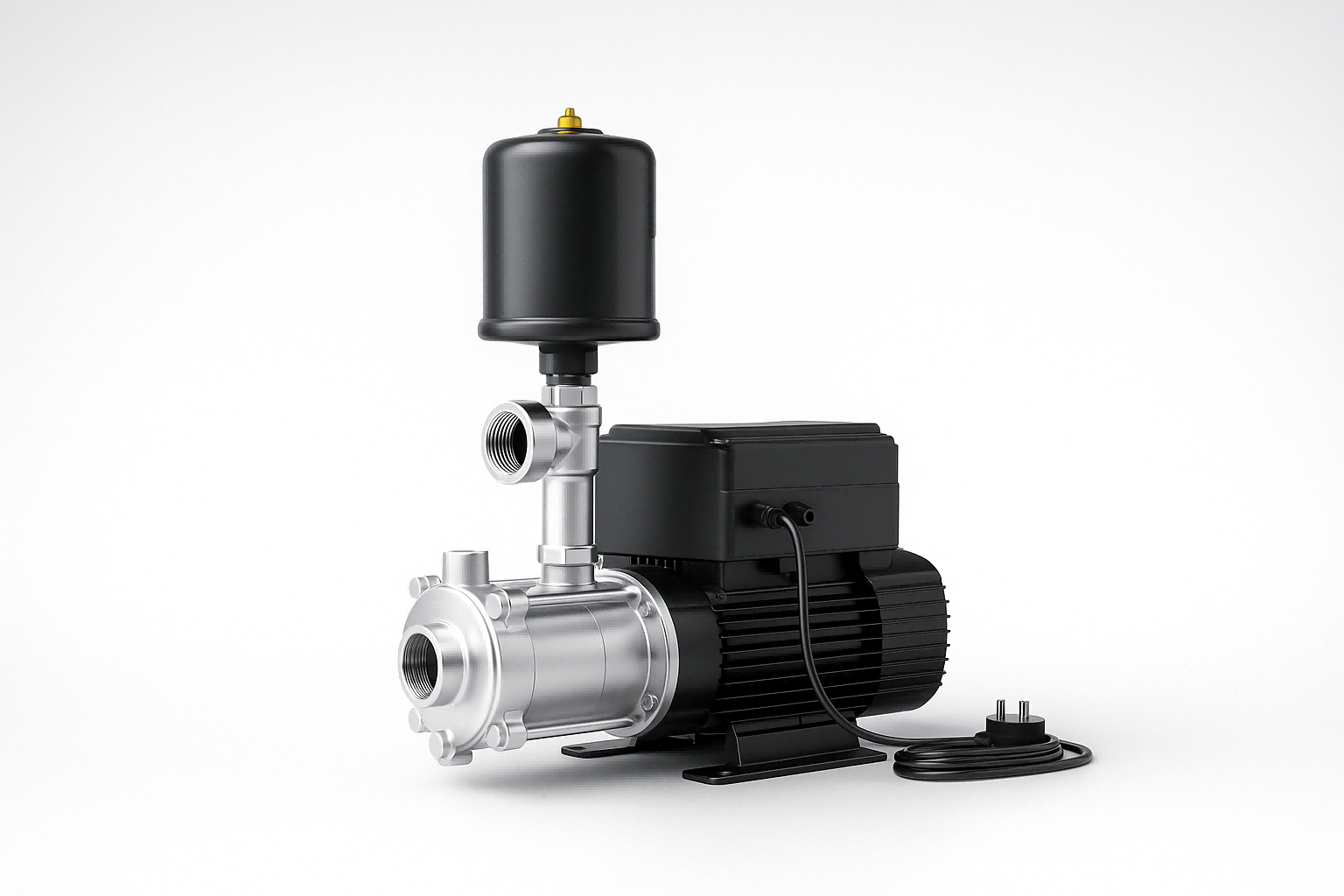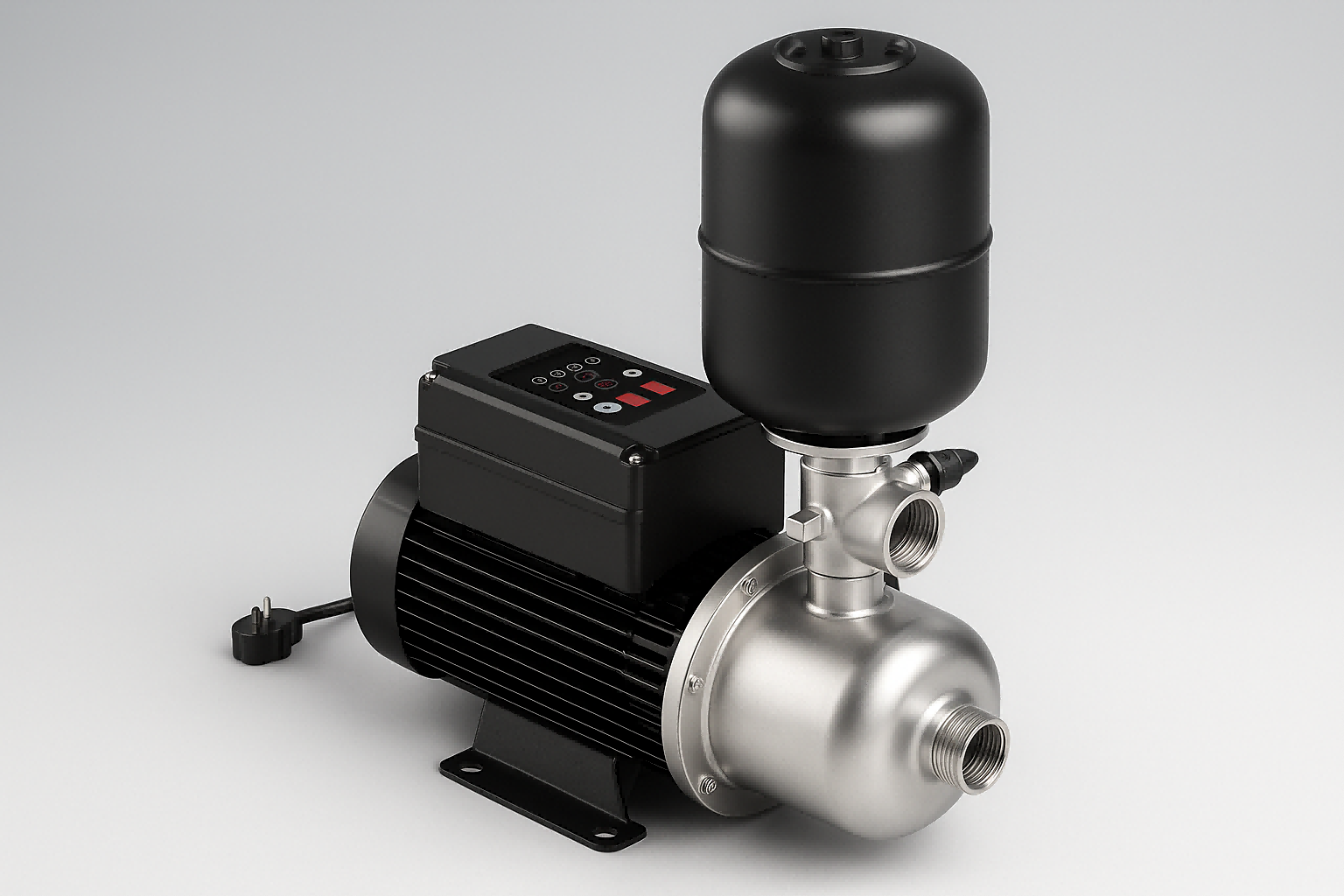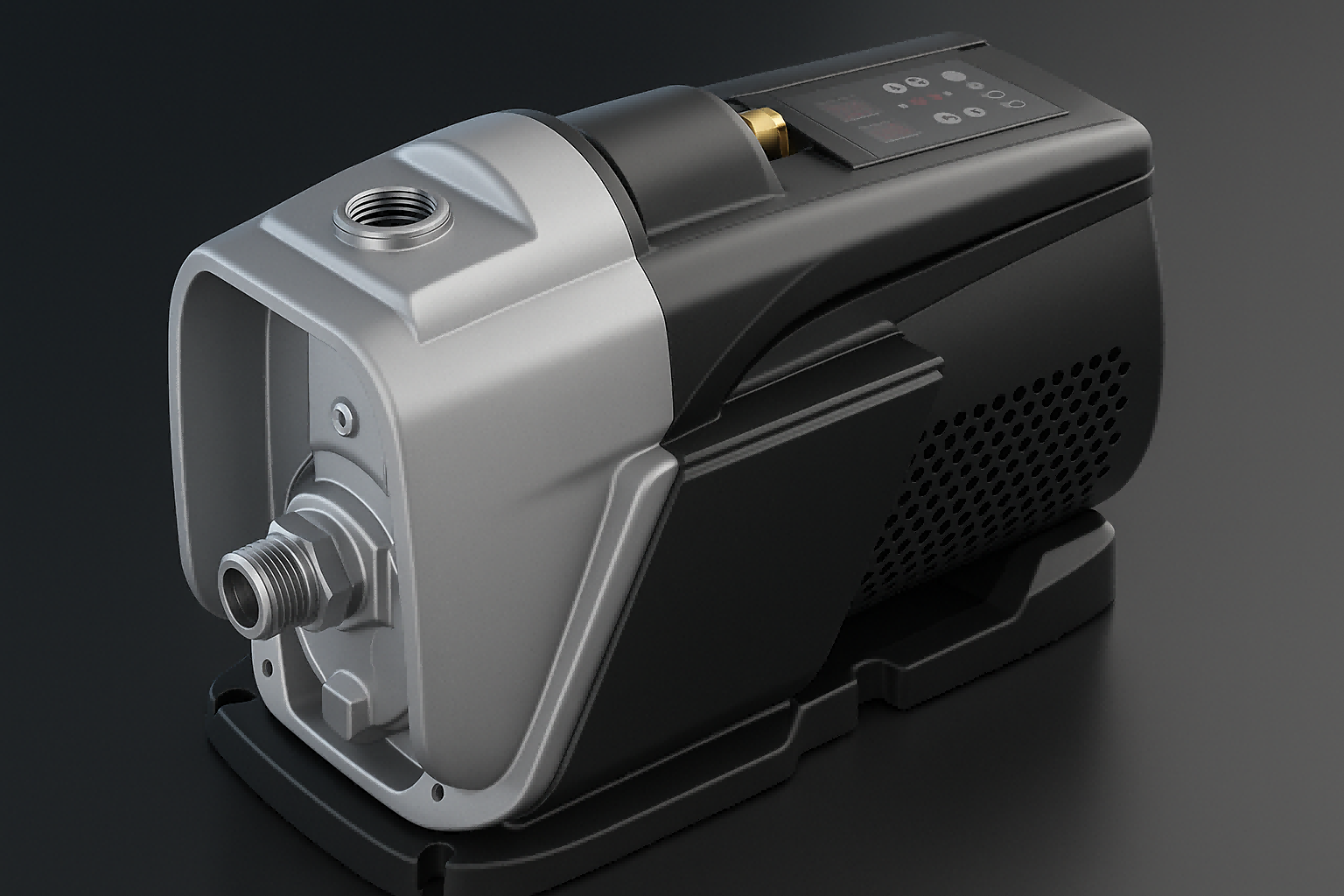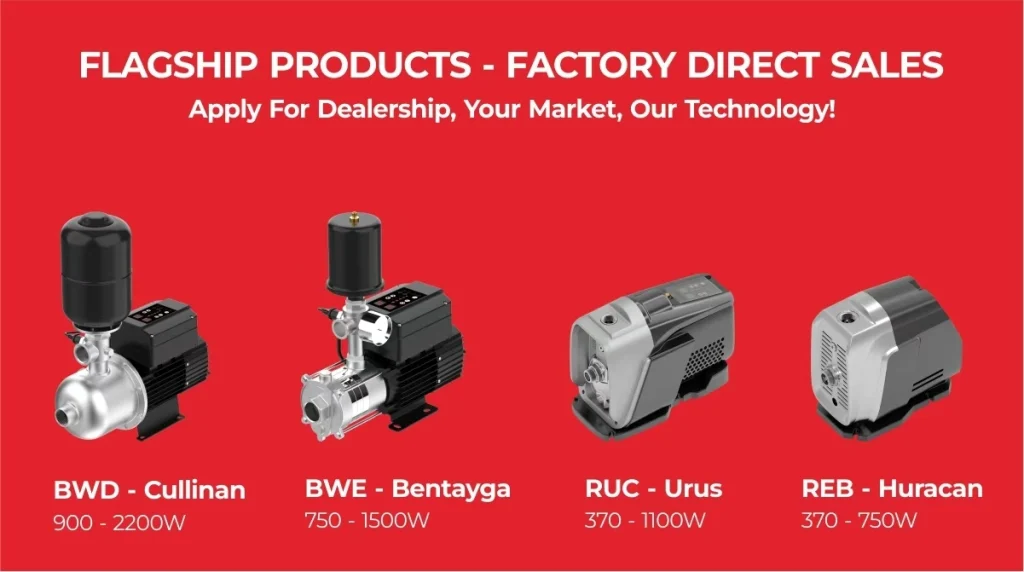Struggling with inconsistent water pressure?
Your customers complain, and existing systems underperform, impacting your reputation and sales.
You need a reliable, efficient solution.
To increase and stabilize water supply, run a variable speed drive (VSD) booster pump continuously.
Unlike fixed-speed pumps, VSD pumps automatically adjust their speed to match water demand, ensuring constant pressure and optimal energy use without needing specific run-times or schedules.
This provides a permanent solution.
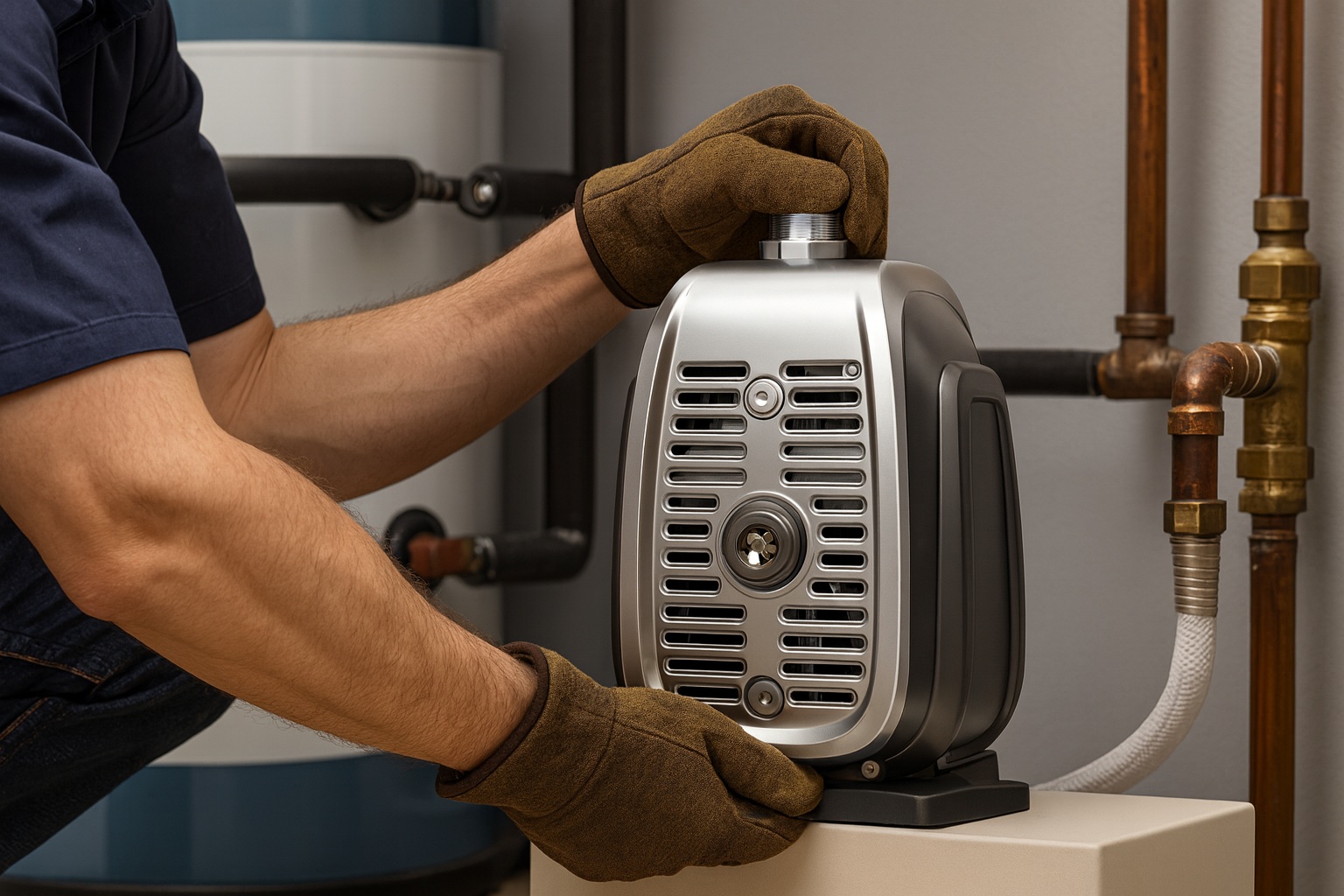
A constant, reliable water supply is non-negotiable for modern residential and commercial buildings.
Old, inefficient pumping systems are a major source of frustration for end-users and a logistical headache for distributors and installers.
The question isn't just about how long to run a pump, but how to run it smarter.
Let's explore how modern VSD technology transforms the entire approach to water supply management, offering a solution that benefits both you and your customers.
This guide will break down the core principles that make intelligent pumps the superior choice.
Understanding the Demand for Consistent Pressure
Frustrated by pumps that fail to deliver steady water flow?
This common problem leads to unhappy clients and costly callbacks.
You need a pumping solution that guarantees consistent performance.
The ideal solution is a system that maintains constant pressure regardless of demand fluctuations.
Variable Speed Drive (VSD) pumps achieve this by intelligently adjusting motor speed in real-time, eliminating pressure drops and surges common with traditional fixed-speed pumps.
For your customers, water pressure isn't a technical detail; it's a fundamental aspect of their daily comfort and operations.
Whether in a family home, a hotel, or an industrial facility, fluctuating pressure is a tangible problem.
It means weak showers, inefficient appliances, and disruptions to processes.
As a distributor, providing a solution that permanently resolves this issue positions you as a high-value partner, not just a supplier.
The key is shifting the conversation from simple pump mechanics to the advanced technology that powers modern water supply systems.
The Role of Intelligent Control
The core of the problem lies in the inability of traditional pumps to adapt.
Fixed-speed pumps operate on a simple on/off cycle, leading to a "start-stop" operation that is both inefficient and ineffective at maintaining stable pressure.
This is where the intelligence of a VSD system comes into play.
A VSD pump, also known as a variable frequency drive (VFD) pump, is equipped with a sophisticated controller that acts as the system's brain.
It continuously monitors pressure in the pipeline.
When demand increases (e.g., multiple taps are opened), the controller instantly increases the pump's motor speed to meet that demand and maintain the set pressure.
Conversely, when demand drops, the motor speed is reduced.
Comparing Pumping Technologies
Understanding the difference between pump types is crucial for explaining the value proposition to your clients.
A table can effectively illustrate these differences.
| Feature | Traditional Fixed-Speed Pump | VSD Intelligent Booster Pump |
|---|---|---|
| Operation | Runs at 100% speed or is off. | Speed varies from 0% to 100%. |
| Pressure Control | Creates pressure fluctuations and surges. | Maintains a precise, constant pressure. |
| Energy Use | Consumes maximum power during every cycle. | Uses only the energy needed for the demand. |
| System Wear | High mechanical stress from frequent starts/stops. | Soft-start feature reduces mechanical wear. |
| Noise Level | Often loud, especially during startup. | Significantly quieter due to controlled speed. |
| Complexity | Requires a large pressure tank to buffer cycles. | Often integrates a smaller tank or none at all. |
This comparison highlights why VSD technology is the superior choice.
It directly addresses the core issue of inconsistent supply by replacing brute-force operation with intelligent, responsive control.
This technological leap is the foundation for a more reliable and efficient water management solution.
The Advantages of Variable Speed Drive (VSD) Systems
Tired of high energy bills from inefficient pumps?
These outdated systems consume excessive power, shrinking your customers' budgets and your profit margins.
A more efficient technology is needed.
VSD booster pumps reduce energy consumption by up to 50%.
By precisely matching motor speed to water demand, they eliminate the wasted electricity common in fixed-speed systems, delivering significant cost savings and superior performance for any building's water supply.
Beyond just solving the pressure problem, VSD technology offers a cascade of benefits that are highly attractive to property owners and facility managers.
The initial investment in an intelligent pump system is quickly offset by substantial operational savings and enhanced reliability.
For a distributor, being able to articulate these long-term advantages is key to winning larger projects and building lasting client relationships.
Let's delve deeper into the specific operational and financial benefits that make VSD pumps the smart investment.
Drastic Reduction in Energy Consumption
The most significant benefit of a VSD pump is its energy efficiency.
Traditional pumps are energy hogs because they always run at full speed, regardless of whether one faucet is open or ten.
This is like using a sledgehammer to crack a nut.
A VSD pump, however, operates on a principle of precise application of power.
The Affinity Laws in fluid dynamics dictate that the power consumed by a pump is proportional to the cube of its speed.
This means even a small reduction in pump speed leads to a massive reduction in energy use.
- Running at 80% speed uses only 51% of the energy.
- Running at 50% speed uses a mere 12.5% of the energy.
This efficiency translates directly into lower electricity bills for the end-user.
For commercial clients like hotels, hospitals, or manufacturing plants, these savings can be substantial over the pump's lifespan, making the VSD system a compelling financial proposition.
Enhanced System Longevity and Reduced Maintenance
Mechanical stress is the enemy of equipment life.
Fixed-speed pumps cause significant wear and tear on the entire water system.
Every time they start, they create a powerful hydraulic shock, known as water hammer, which stresses pipes, joints, and valves.
The abrupt start-stop cycles also place immense strain on the pump's motor and mechanical seals.
VSD pumps mitigate this in several ways.
- Soft Start/Stop: The VSD controller gently ramps the motor up to speed and slows it down, eliminating water hammer and electrical surges.
- Fewer Cycles: By modulating speed instead of constantly turning on and off, the VSD pump reduces the number of start/stop cycles, which is a primary cause of motor failure.
- Optimized Operation: The pump runs only as fast as necessary, leading to less wear on bearings, impellers, and seals.
The result is a pumping system that lasts longer, requires fewer repairs, and experiences less downtime.
For your business, this means happier customers, fewer warranty claims, and a reputation for providing durable, high-quality solutions.
How to Select the Right VSD Booster Pump
Choosing the wrong pump leads to poor performance and system failure.
This damages your reputation and results in lost business.
You need to specify the correct pump every time.
Select a VSD pump based on the required flow rate and pressure head for the specific application.
Also, consider factors like build quality, certifications (CE, RoHS), and the sophistication of the intelligent controller to ensure reliable performance and energy efficiency.
Specifying the correct pump is where your expertise as a distributor truly shines.
It’s not about selling the biggest or most powerful pump; it’s about providing the most appropriate and efficient solution for your client's unique needs.
A properly sized VSD system will deliver all the benefits we've discussed, while an incorrectly sized one can lead to inefficiency and premature failure.
Guiding your client through this selection process builds trust and solidifies your role as an expert advisor.
Key Performance Metrics to Consider
Before choosing a pump, you must define the system's requirements.
The two most critical metrics are flow rate and pressure head.
- Flow Rate (Q): This is the volume of water the pump needs to move, typically measured in gallons per minute (GPM), cubic meters per hour (m³/h), or liters per second (L/s). It is determined by the total demand of all fixtures and appliances that could be operating simultaneously.
- Pressure Head (H): This is the total height the pump must lift the water, plus the pressure required at the destination and the friction losses in the piping. It is usually measured in feet, meters, or pounds per square inch (PSI).
You must calculate the peak demand of the building to correctly size the pump.
A pump that is too small will fail to maintain pressure during high-demand periods.
A pump that is too large will operate inefficiently and may cycle on and off more than necessary, even with a VSD controller.
Analyzing Application Requirements
The right pump depends entirely on the application.
Different environments have vastly different needs.
Here’s a breakdown of considerations for common scenarios.
| Application | Key Considerations | Recommended Pump Type |
|---|---|---|
| Residential Buildings | Quiet operation, compact size, ease of installation, stable pressure for multiple floors. | Intelligent permanent magnet variable frequency self-priming pumps. |
| Commercial Complexes | High reliability, ability to handle wide demand fluctuations, integration with building management systems. | Permanent magnet variable frequency multi-stage horizontal centrifugal pumps. |
| Industrial Facilities | Robust construction, resistance to harsh conditions, ability to handle specific fluids, high-pressure capabilities. | VFD Boosting Pump or Constant Pressure Booster Pump systems. |
| Agricultural Irrigation | High flow rates, durability, potential for solar power integration, resistance to debris. | Solar water pumps, Vertical centrifugal pumps. |
The Value of Quality and Certification
When sourcing pumps for your inventory, never compromise on quality.
As a distributor for a brand like RAFSUN, you are providing your clients with a product backed by rigorous engineering and quality control.
Key indicators of a high-quality pump include:
- Certifications: Look for CE, IEC, and RoHS certifications, which guarantee the product meets high safety, quality, and environmental standards.
- Material Quality: Stainless steel components resist corrosion and ensure a longer service life.
- Advanced Technology: The presence of patented technology in areas like intelligent permanent magnet motors indicates a manufacturer at the forefront of innovation.
- Testing Protocols: Rigorous testing, such as salt spray and UV resistance tests, ensures the product can withstand demanding environmental conditions.
By focusing on these quality markers, you ensure that the pumps you supply are reliable, efficient, and built to last, reinforcing your reputation as a provider of premium solutions.
The Business Case for Distributors
Are you struggling to differentiate your products in a crowded market?
Competing on price alone is a losing strategy.
You need a product that offers superior value and protects your margins.
Partnering with a specialized VSD pump manufacturer like RAFSUN allows you to offer high-efficiency, patented technology.
This positions you as a premium supplier, enabling you to secure higher margins, win larger projects, and build a loyal customer base focused on quality.
For importers and distributors, the product you carry is a direct reflection of your business.
Aligning with a manufacturer that prioritizes innovation, quality, and partnership is a strategic decision that pays long-term dividends.
It’s about moving beyond transactional sales and becoming a solutions provider.
An advanced product line like VSD booster pumps provides the perfect platform to elevate your business, strengthen your market position, and drive sustainable growth.
Establishing a Competitive Advantage
In today's global market, simply offering a standard water pump is not enough.
Your customers, particularly savvy business owners like Andrew from Australia, are looking for technology that solves problems and provides a return on investment.
By specializing in VSD pumps, you create a distinct competitive advantage.
- Technology Leader: You become the go-to expert for energy-efficient water management solutions in your region.
- Problem Solver: You are not just selling a product; you are solving your customers' core issues of inconsistent pressure and high operating costs.
- Future-Proofing: VSD technology is the industry standard for modern buildings. By offering it, you are providing solutions that are designed for the future, not the past.
This focus on advanced technology allows you to shift the conversation from price to value, performance, and long-term savings.
Building a Profitable Partnership Model
A successful distribution business thrives on strong partnerships and diverse revenue streams.
Working with a manufacturer that supports its distributors is key.
Here’s how you can build a profitable model around VSD pumps.
| Revenue Stream | Description | Margin Potential |
|---|---|---|
| Direct Pump Sales | Reselling high-quality VSD pumps to installers, contractors, and developers. | 15-30% on pumps. |
| System Packages | Bundling the pump with tanks, controllers, and other accessories for a complete solution. | Higher overall project value. |
| Spare Parts & Accessories | Supplying high-margin spare parts and accessories for maintenance and repairs. | Recurring, high-margin sales. |
| Installation & Maintenance | Offering professional installation and ongoing service contracts for the systems you sell. | Creates long-term customer relationships. |
| Private Branding | Leveraging the manufacturer's capabilities to sell pumps under your own brand, increasing brand equity. | Enhances market control and recognition. |
By partnering with a manufacturer like RAFSUN, which has a large production capacity (300,000+ units annually) and a dedicated R&D department (30+ engineers), you gain access to a reliable supply chain and innovative products.
This enables you to confidently pursue these revenue streams and build a robust, multi-faceted business.
Your success is built on the foundation of the quality and innovation of the products you represent.
Conclusion
A VSD booster pump is the modern solution for increasing and stabilizing water supply.
It delivers constant pressure, significant energy savings, and long-term reliability for any application.
Frequently Asked Questions
What is the main advantage of a VSD pump over a traditional one?
The main advantage is energy efficiency.
VSD pumps adjust their speed to match water demand, which can reduce electricity consumption by up to 50% compared to fixed-speed pumps.
How does a VSD pump maintain constant pressure?
A VSD pump uses a pressure sensor and an intelligent controller.
The controller continuously monitors the pressure and adjusts the pump's motor speed to precisely match water usage, ensuring pressure remains stable.
Can VSD pumps reduce water hammer?
Yes, VSD pumps feature a "soft start" and "soft stop" function.
This gradual acceleration and deceleration of the motor eliminates the sudden pressure surges that cause water hammer.
Are VSD pumps more expensive than traditional pumps?
VSD pumps typically have a higher upfront cost.
However, the significant energy savings and reduced maintenance needs often result in a lower total cost of ownership over the pump's lifespan.
How long does a VSD booster pump last?
With proper installation and maintenance, a high-quality VSD pump can last for many years.
The reduced mechanical stress from soft starts and optimized operation contributes to a longer equipment lifespan.
Is it difficult to install a VSD pump?
Installation is similar to a traditional booster pump system.
However, proper setup of the controller and pressure settings is crucial for optimal performance, so professional installation is recommended.
Can I use a VSD pump with a well system?
Yes, VSD pumps are an excellent choice for well systems.
They provide constant pressure throughout the house, eliminating the fluctuations commonly experienced with traditional well pumps and pressure tanks.
Do VSD pumps require a large pressure tank?
No, VSD pumps often require a much smaller pressure tank or sometimes none at all.
Since they maintain constant pressure by adjusting speed, they don't need a large tank to buffer pressure cycles.



